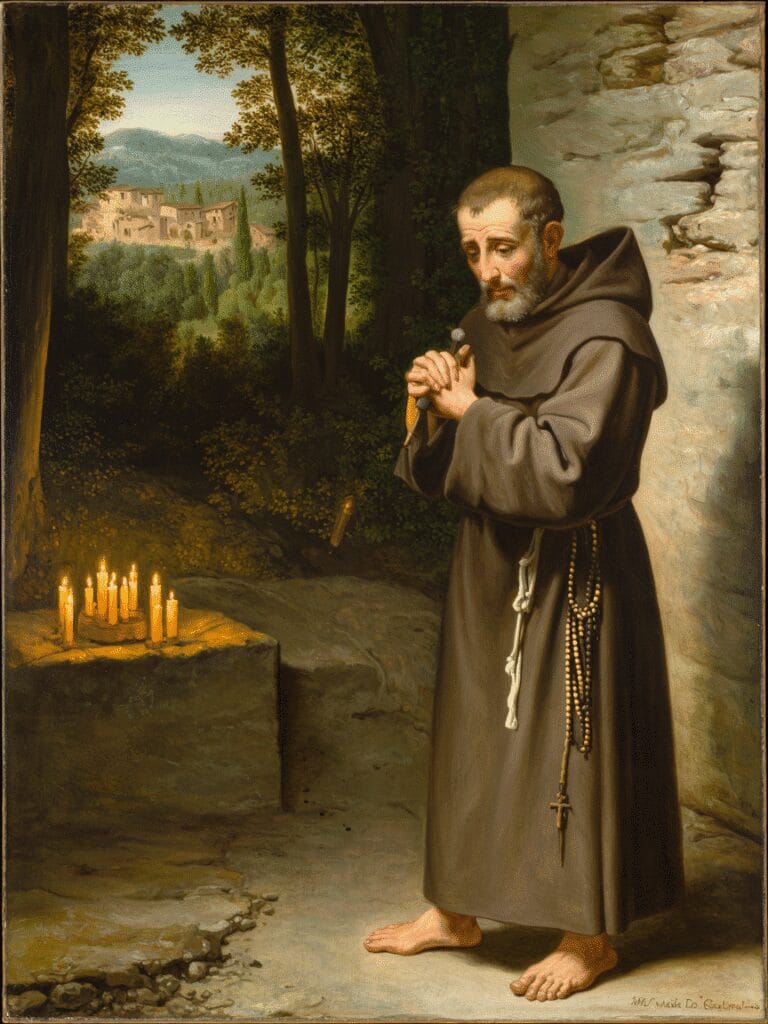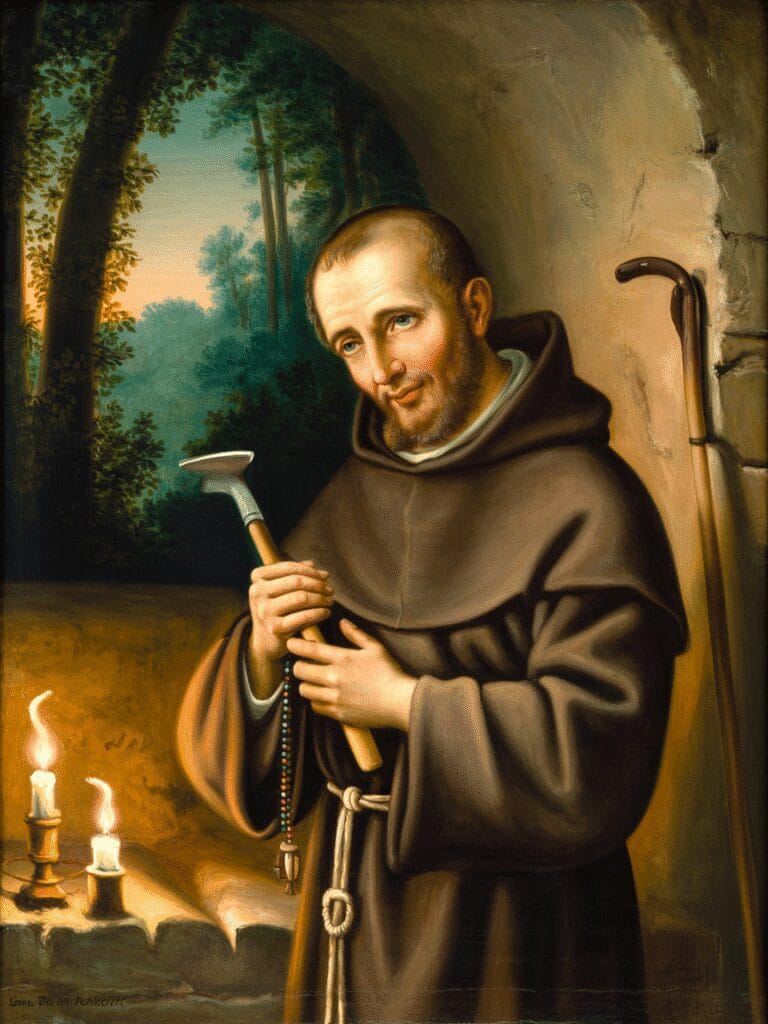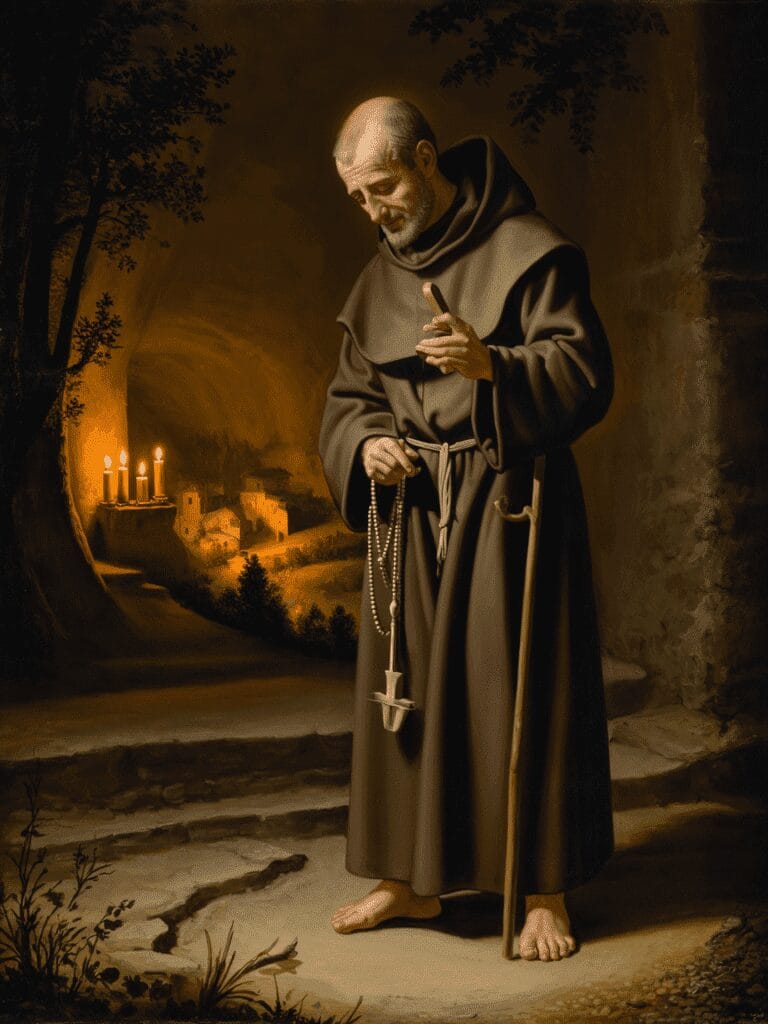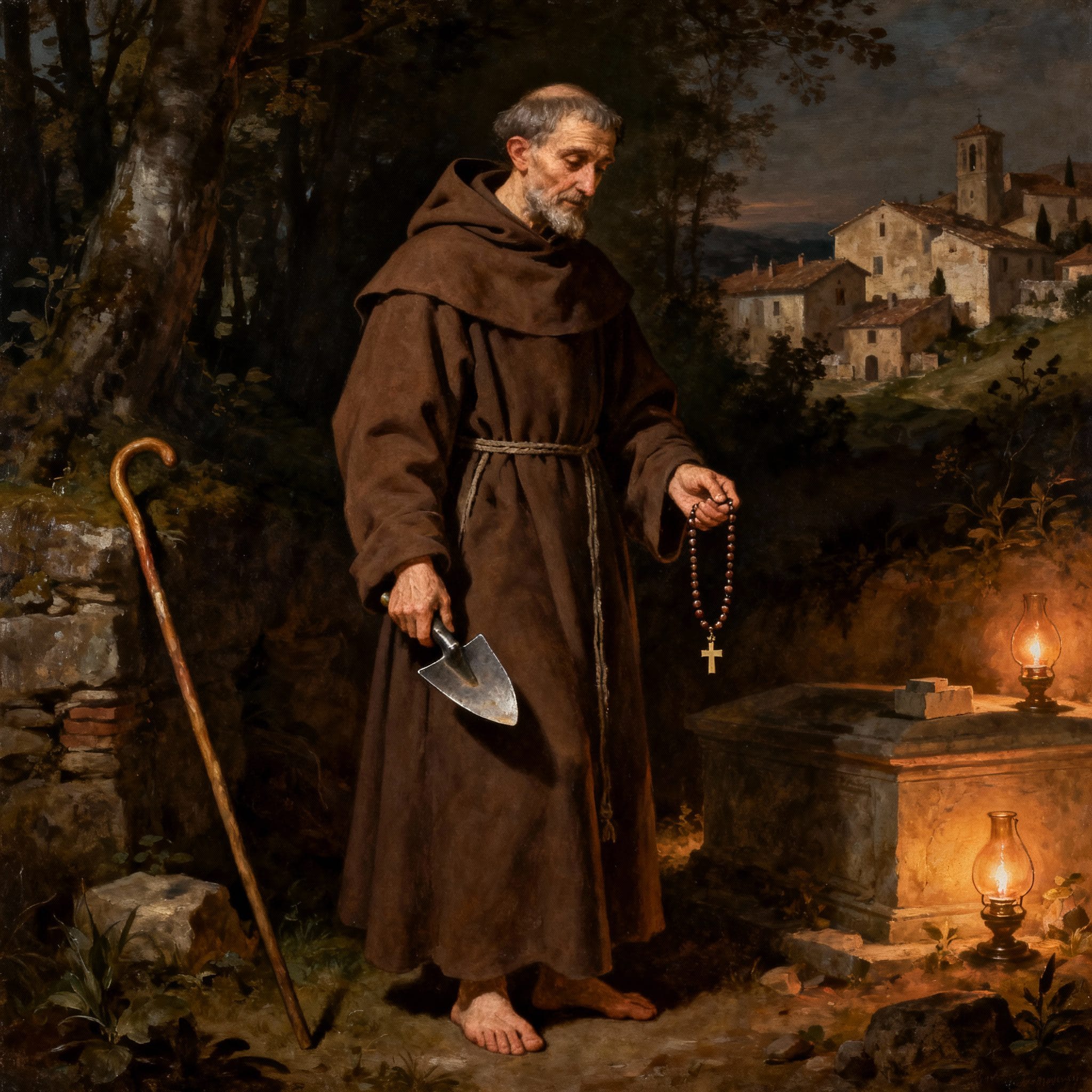Saint Seraphim of Ascoli, known as Saint Seraphim of Montegranaro (1540–1604), was an Italian Capuchin lay brother whose poverty, humility, and piety still shine today, and whose liturgical memory is celebrated on October 12. He died in Ascoli Piceno, and was very early on worshipped by the people, confirmed when Pope Paul V authorized the lighting of a lamp on his tomb, a sign of his de facto recognized holiness.
Childhood and calling
Born in Montegranaro in the Marche region and baptized Felice Piampiani, he grew up in a poor family and experienced work and prayer early on, tending flocks during his childhood. The desire for a life entirely dedicated to God matured as a young mason's assistant, enduring the harshness of a violent boss and confiding to a noblewoman his aspiration to "think only of God." This benefactress facilitated his entry into the Capuchins, discerning in him a vocation shaped by patience, simplicity, and prayer.
Entry into the Capuchins
Admitted as a lay brother to the Order of Friars Minor Capuchin, he completed his novitiate in Jesi and received the religious name of Seraphim, as a sign of his fiery love for God. He was sent to various convents in the Marches, where his goodwill was well-known, even though his superiors and confreres often reprimanded him for his clumsiness and excessive generosity. Despite these trials, his kindness, poverty, humility, and mortification built up the communities he served in the most humble tasks.
In Ascoli, a brother for all
In 1590, he was permanently established in the Capuchin monastery of Ascoli Piceno, where he mainly assumed the role of collector, tirelessly visiting homes and hearts. The population became so deeply attached to him that in 1602, when rumors of a transfer arose, the authorities begged his superiors to leave him in Ascoli. His presence there became a catalyst for social peace, calming resentments and reviving souls with his simple and penetrating words.

Virtues and prayer
His spiritual life is summed up in two "books" that he never left: the crucifix and the rosary crown, instruments of contemplation and evangelization. His devotion to the Crucified and to the Virgin was manifested even in his iconography, often depicted holding a small metal crucifix and the rosary, avoiding that his person be honored rather than Christ. From this fidelity were born gentleness, patience, inner joy and a wisdom that sometimes astonished even scholars.
Miracles and graces
The Lord confirmed his servant with graces of introspection of hearts, ecstasies and healings, which sustained his charity towards the sick and the poor. Many sick people recovered their health at the sign of the cross traced by his hand, while he himself fled all vain glory and sought the silence of the cloister. These signs were not ends in themselves but the efflorescence of his night prayer and his love for the Eucharist.

Trials and humiliations
He could neither read nor write, and his academic ignorance was for him a place of humility where the Word of God was imprinted by the Spirit more than by letters. The public humiliations that he voluntarily accepted sealed his desire to be despised for the love of Christ, an attitude noted even in the stories linked to his canonization. Thus the real poverty of his means became the royal road to a wisdom that is expressed in evangelical simplicity.
Death and birth in heaven
Having insistently requested viaticum, he surrendered his soul to God on October 12, 1604, in Ascoli, in a peace that confirmed the growing reputation for holiness surrounding him. People flocked to his remains, and his tomb immediately became a place of prayer; six years later, Paul V authorized a votive lamp to shine over his tomb. His relics still rest in the church of the Capuchin convent of Ascoli, which has become a sanctuary dedicated to the saint.
Beatification and canonization
Popular veneration gradually transformed into official recognition: he was beatified by Benedict XIII in 1729, establishing a widespread cult. On July 16, 1767, Clement XIII solemnly inscribed him in the catalogue of saints, offering the Church a model of Capuchin fraternity and humble prayer. This canonization confirmed the fruitfulness of a hidden life that, through grace, illuminates the crowds.

Liturgical feast
The Church celebrates his memory on October 12, honoring a Friar Minor whose poverty and piety were his true riches. The Roman Martyrology recalls him in Ascoli Piceno, where his humility, poverty, and persevering devotion shone. Today's liturgy invites us to rediscover the path of the little ones who bring God's peace and mercy.
Iconography and sanctuaries
Tradition depicts him in Franciscan habit, crucifix and rosary in hand, the "two books" that were his living rule of contemplation and mission. The sanctuary of Ascoli, built on the former monastery of Santa Maria in Solestà and dedicated to San Serafino, preserves his relics under the high altar. The church features a pictorial cycle by Paolo Augusto Mussini on the life of the saint, from the "miracle of the cabbages" to his "death," highlighting the journey of grace of a brother of the poor.
The Peace-Seeking Brother
As a porter and collector, he was a friend to families and the poor, bringing reconciliation, consolation, and light to the homes of the Marches. The Ascolans recognized him as a builder of harmony, to the point of intervening to prevent his removal in 1602. His ministry focused on the essentials: visiting, listening, exhorting, praying, and bringing each soul back to the Crucified.
The strength of weakness
Often misunderstood and corrected for his slowness and clumsiness, he learned to accept remonstrances as opportunities to humble himself in the truth. His path to holiness can be expressed in an adage attributed to him: the ascent to God passes through the descent into humility, the path of spiritual childhood. This pedagogy of the Spirit made him astonishingly free and available to all.

Evangelical Wisdom
Without having attended school, he knew how to comment on the Gospel with light, as if guided from within by the Holy Spirit. His words, brief and ardent, touched consciences because they came from prolonged prayer and proven charity. Many sought his advice, feeling that God gave him the ability to read hearts and indicate paths to conversion.
Marian and Eucharistic Devotion
Seraphim devoted himself to the mysteries of Christ and the Virgin, finding in the Eucharist and the rosary the inspiration for his daily service. Night watches in adoration and the simplicity of his prayer shaped his days, making his testimony of joyful poverty credible. This silent fidelity gave his charity a flavor of peace and patience that had a lasting impact on Ascoli.
Healings and Signs
Many testimonies relate healings associated with his blessing and his sign of the cross, like a seal of mercy on the sufferings of the people. The ecstasies with which he was favored were not sought, but received as visits from God that strengthened his active charity. These gifts continued after his death, at the foot of his tomb, where the faithful received help and consolation.
The Tomb of Ascoli
The Capuchin convent of Ascoli, now a sanctuary, remained the living center of his memory, welcoming pilgrims and residents in prayer. The papal authorization of a lamp lit at his tomb sealed the recognition of a holiness already carried by the sensus fidei of the people. This place of grace unites the history of Ascoli with the Franciscan simplicity of a friar who never forgot the little ones.

Recognition of the Church
The beatification by Benedict XIII and the canonization by Clement XIII inscribe his testimony in the universal memory of the Church. The date of July 16, 1767, retains the definitive act that proposes him as a model to imitate, even more than an intercessor to invoke. His feast of October 12 recalls, year after year, the Franciscan vocation to luminous poverty and peace.
Message for today
Saint Seraphim speaks to the present moment through the sobriety of his life, his patience in adversity, and his closeness to those who are wounded by life. His "school" is that of the crucifix and the rosary, two simple and profound paths for learning the love of God and neighbor. Therein lies the secret of a concrete charity that reconciles, heals, and restores the joy of the Gospel.
Conclusion
Saint Seraphim of Ascoli remains a Franciscan witness to the beatitude of the humble, where the smallness offered becomes the power of God. Through his prayer, his works of mercy, and the truth of his poverty, he left a fragrance of the Gospel that the Church enjoys every October 12. May his example help us to seek God in the simplicity of everyday life, with the patience that gives birth to peace.


